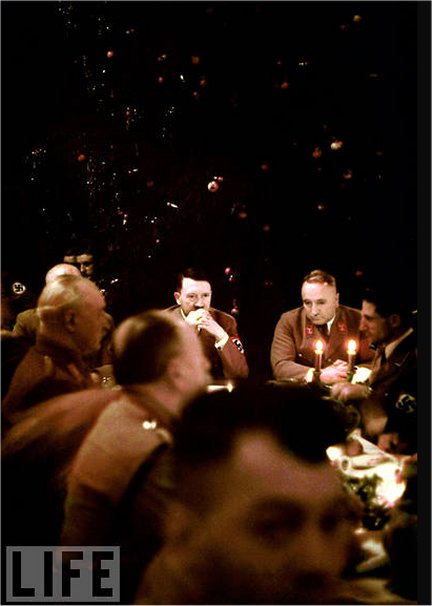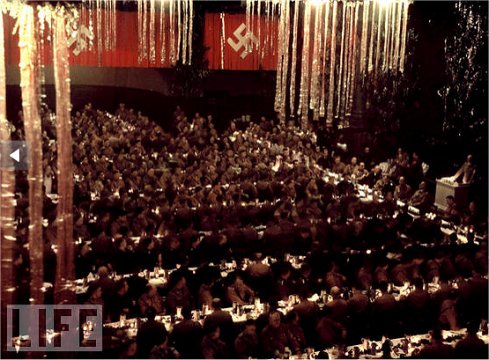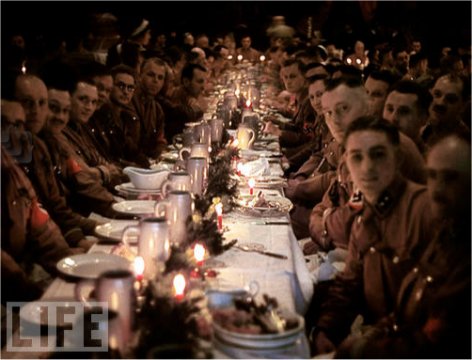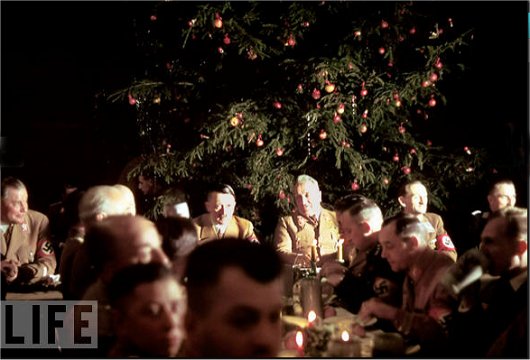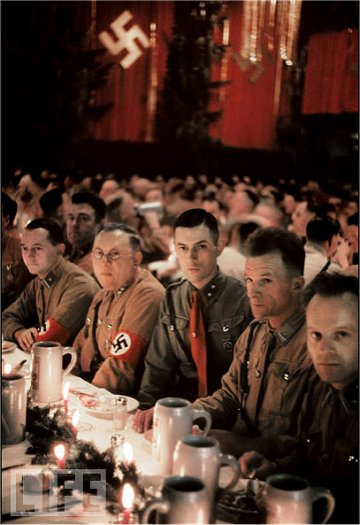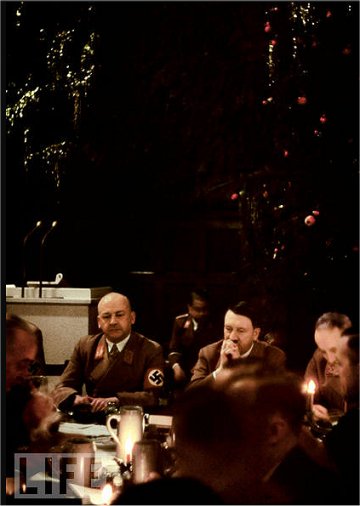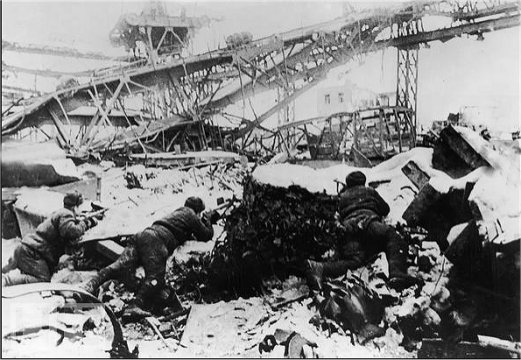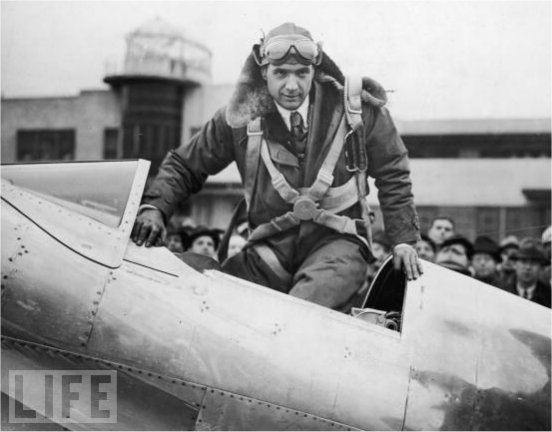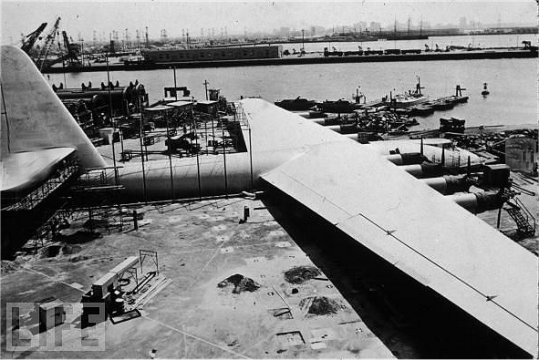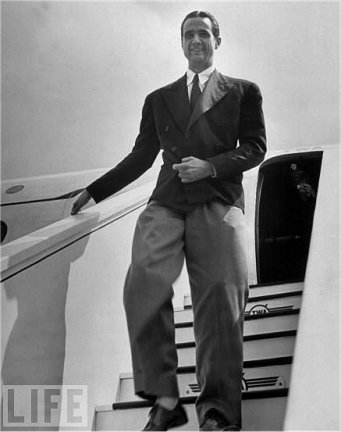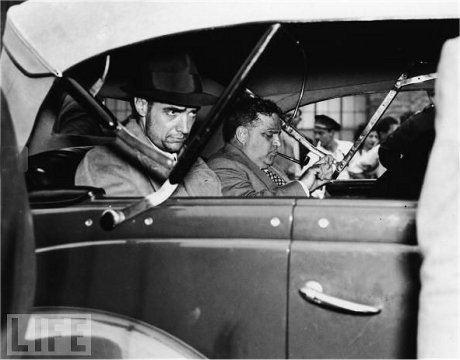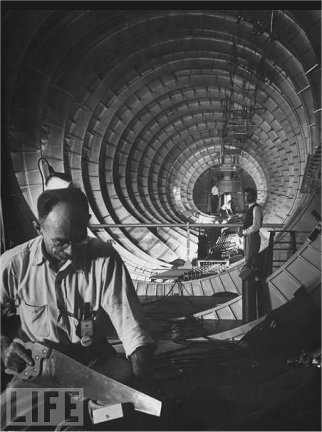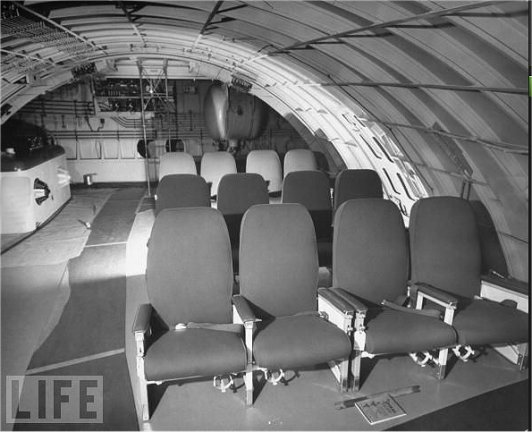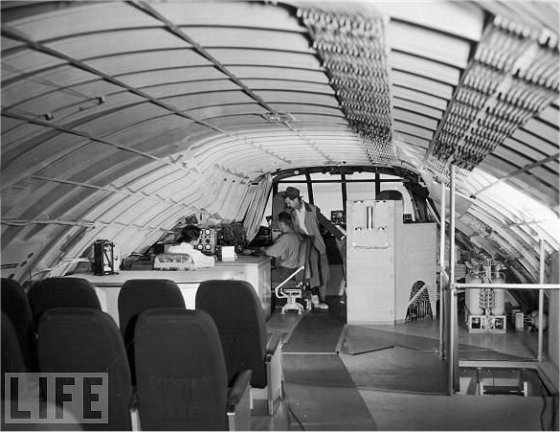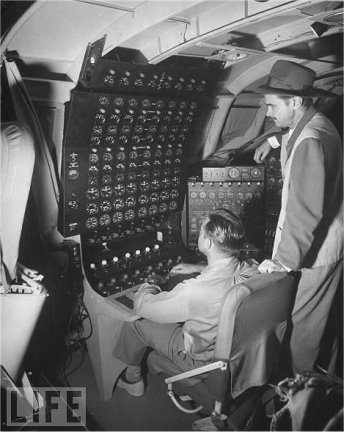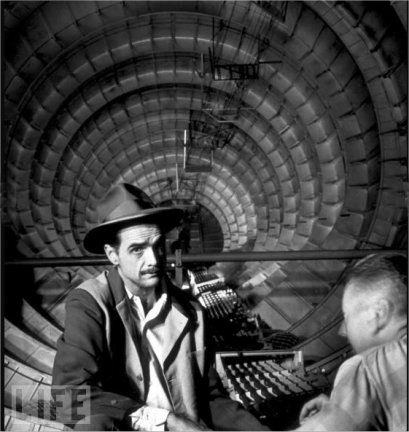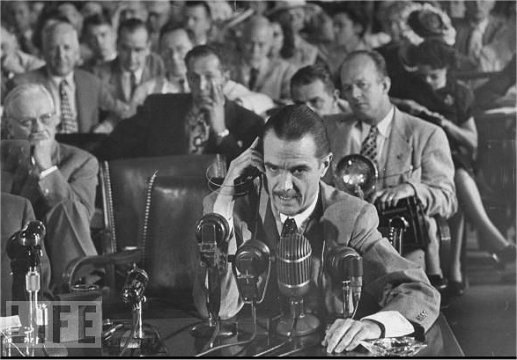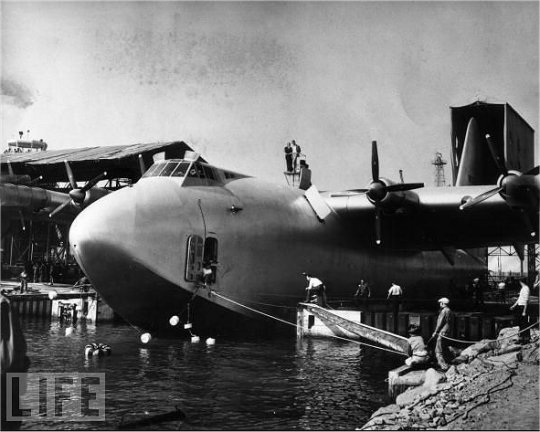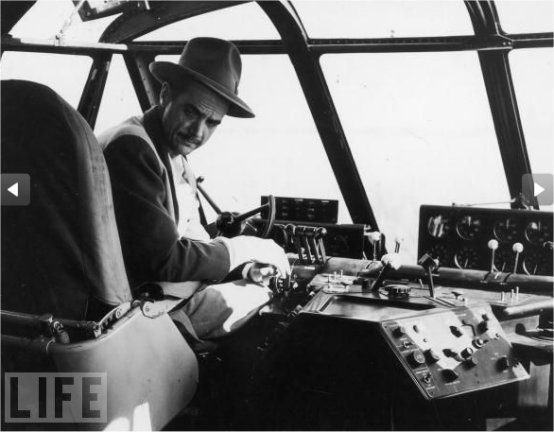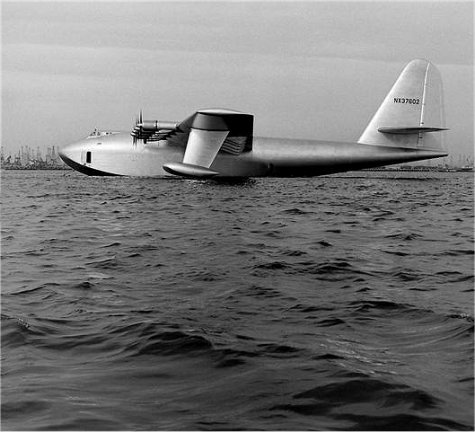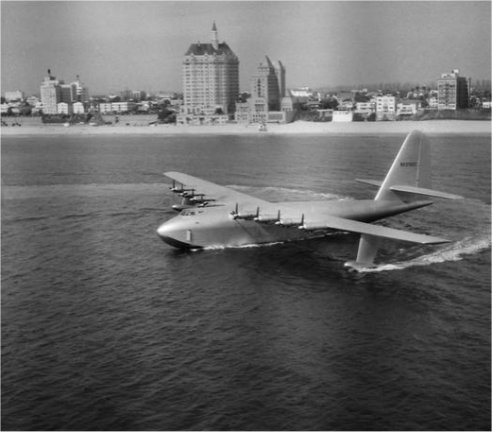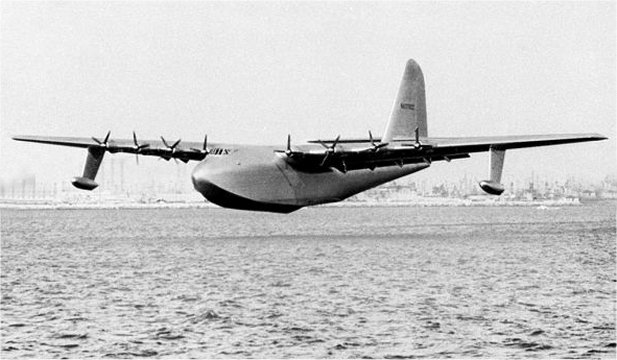Picture 'shows long-dead Labrador' at memorial
to WWII heroes
Historians are sceptical about the possibility
of a ghost dog
but are happy for anything to keep alive the memory
of the Dambusters' work in their Lancaster bombers
Daily
Mail ~ November 2, 2011
He was the loyal companion of the Dambusters hero whose
extraordinary bravery enthralled the nation. Now ghost hunters believe
the spectre of the Dambusters' canine mascot is still faithfully guarding
his master's old quarters. They are convinced that the wraiths of both
Wing Commander Guy Gibson and his chocolate–coloured Labrador haunt the
remote airfield from which the audacious raid was launched.
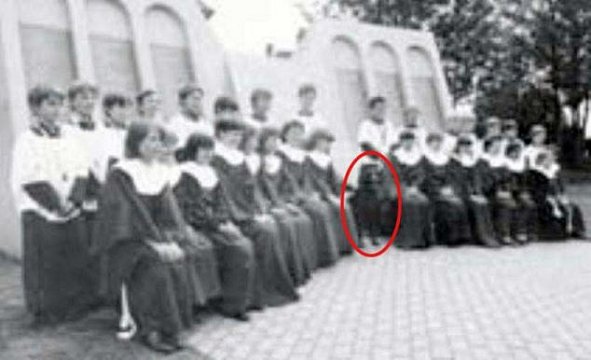
Ghost of a chance? This apparition of a Labrador which
appears
between the two banks of choristers
is one of the photos said to show the Dambusters'
mascot
Investigators decided to step in after a mysterious photograph
emerged of what looks like Gibson's long-dead dog sitting at his master's
memorial. The picture, taken in the 1980s, shows a Labrador among a school
group at a memorial to the Dambusters, close to where Gibson's dog was
buried. The photographer is said to have claimed the dog appeared from
nowhere just as the photo was being taken, refusing to be shooed away.
As soon as the photo was taken, the dog disappeared, never to be seen again.
After staking out the base at RAF Scampton in Lincolnshire, now the home
of the Red Arrows, ghost hunters are convinced it is haunted by a ghostly
Labrador. The lead investigator, Paul Drake, said: There is definitely
paranormal activity there. Ghost dog: Wing Commander Guy Gibson VC, (right),
with his devoted labrador and some fellow officers
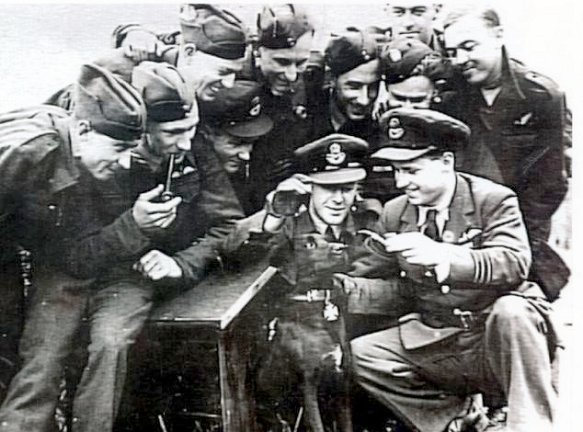
Devoted: Wing Commander Guy Gibson VC, (right), with
his Labrador and fellow officers
'One of our investigators felt a cold spot and when we
measured it, it was eighteen inches, which is about the height of a dog.
'The curator of the museum has told us that he has felt for years that
he has had a presence following him and he definitely feels that it is
that of a dog.' One investigator who stayed overnight at the base last
month even claimed she heard a dog growling when she entered Gibson's former
office. 'I definitely heard the growl of a dog', said Michelle Clements,
45. 'Three of us heard it and we all agreed it was a dog. It was a really
low growl. It wasn't a happy yap at all. It sounded sounded like he was
warning us to stay away.'
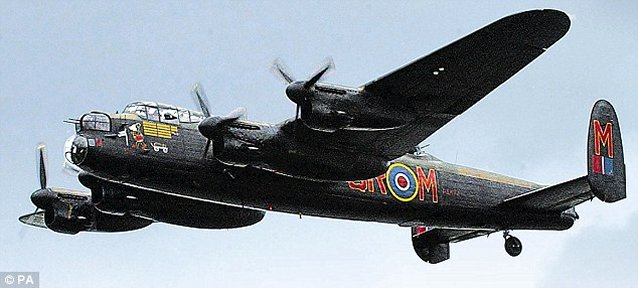
Remember them: Historians are sceptical about the
possibility of a ghost dog
but are happy for anything to keep alive the memory
of
the Dambusters' work in their Lancaster bombers
After scouring the base with infra-red lights, proximity
sensors and video cameras, the team say they picked up activity which suggests
the pilot was trying to speak to them. 'I do believe we spoke with Guy
Gibson,' Miss Clements, a school dinner lady from Leicester, said. 'We
asked him if he was with his girlfriend Margaret and he said yes. We also
played some old music from the 40s and there was a response to that as
well.'
Gibson's Labrador, Nigger, was the mascot for the squadron
that launched an audacious night-time raid on three heavily defended dams
deep in Germany's industrial heartland using bouncing bombs. Their success
was immortalised in the classic 1954 film The Dambusters, its thrilling
theme tune and gung-ho script evoking the best of British derring-do.
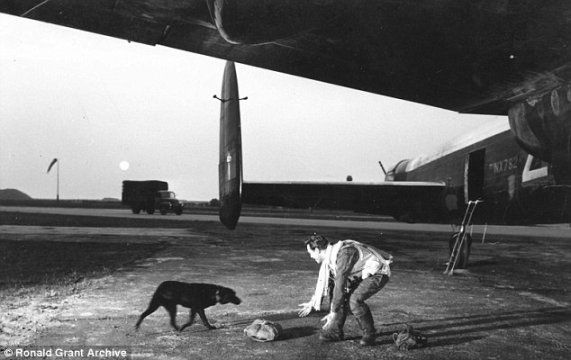
Celebrated feats: Actor Richard Todd as Wing Commander
Guy Gibson
with the dog who played Nigger in the 1955 film The
Dam Busters
The Labrador's name was used as a code word whenever one
of Germany's Ruhr Dams was breached during the mission. Tragically, he
had been run over and killed outside the base just hours before the raid
and, fearing it was a bad omen, heartbroken Gibson ordered the death to
be kept secret and the dog to be buried quickly outside his office next
to the squadron hangar.
Gibson himself returned from the mission and was awarded
the Victoria Cross for his bravery, but was later killed in 1944, when
his Mosquito crashed in Holland during a raid. The story of the Dambusters
is now set to be retold in a new film by Lord of the Rings director Peter
Jackson – although the dog is to be renamed Digger as the original name
is now recognised as an offensive term.
Jim Shortland, a historian who specialises in the Dambusters,
said he was sceptical about the paranormal but welcomed the investigation.
'What they expect to find I don't know,' he said. 'But I think anything
that helps to keep the memory alive of the things those lads did in the
Second World War is a good thing.'
